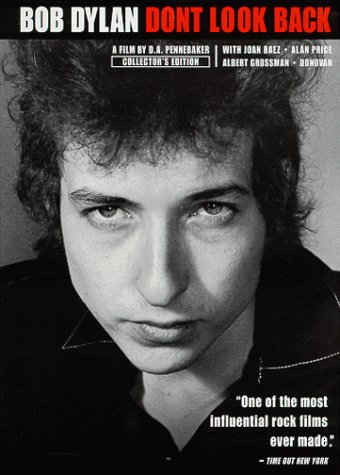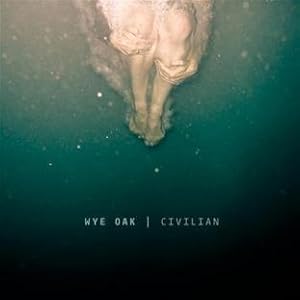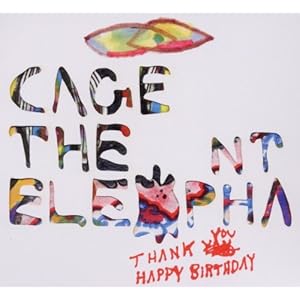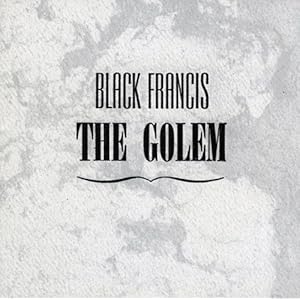Tweet
This review will feature in the April edition of Notion Magazine
For all the wild exaltation heaped on neo-psych savants Animal Collective, it seems the most dedicated of discerning musos have found greater kindred spirit in Panda Bear, the solo side project of AC founder-member Noah Lennox. Scene-screening blogs Tiny Mix Tapes and Gorilla vs. Bear both picked the last Panda Bear record, 2007’s Person Pitch, as their best of the decade. Pitchfork placed it eighth – a full six places above its more illustrious cousin, Merriweather Post Pavilion. Early, and erroneous, whispers of a chillwave godfather spurred the record on, while the woozy adventures across borderless meter and time kept it on heavy rotation from East London to East Village.
However, those expecting Tomboy to ape the gurgling atoll-pop of Person Pitch may well fall off their Fixie bikes. Rather than floating a pedalo off a Pacific shore, this time the good ship Panda Bear has been anchored, with Lennox finding his feet on more concrete musical ground. Lead single ‘Tomboy’, which emerged last July, served early notice of a change of direction. Rolling dub-rhythms provided new rhythmic ballast. Huge riffing slabs of guitar – something Lennox attributes to “thinking about Nirvana and the White Stripes” – replaced the clicks, whirs and keys of yore. And while the multi-tracked tribal vocal attack remained, the spears had been sharpened. This was experimental music with songform, designed for the dancehalls, not the bedroom.
It’s not an exception that proves the rule. Experimental producer par excellence Sonic Boom (formerly of Spacemen 3) shows himself either to be a genius of reinvention or utterly superfluous to the recording process – having helmed the diffusion of MGMT’s clipped electro-pop into one big lysergic meander last year, here his mix performs the opposite trick. Tomboy contains 11 tracks, and ‘songs’ abound – great, soaring, bombastic ones, superabundant with killer hooks.
Only a late run of ambient numbers, starting with the sore-thumb shimmer-sprawl of ‘Scheheradze’, break rank. Juxtaposed with breathless, intelligible pop singles like ‘You Can Count On Me’ and ‘Surfer Hymn’, the wobbly stuff falls flat. Poppiest, and best, is the superb ‘Last Night At The Jetty’ – which twists the disposable afro-prep whimsy of Vampire Weekend into something at once bouncing and brash, yet suffused with glassy-eyed regret. “Didn’t we have a good time?” sigh a thousand Lennox’s in undulating unison. Aren’t we now?
8/10
Choice Cuts: Last Night At The Jetty; You Can Count On Me
Tomboy is released 11 April on Paw Tracks
Sunday, 10 April 2011
Top 10 Rock Documentaries
Tweet
In honour of the release of the Foo Fighters' career-spanning documentary Back and Forth, we pick out some of the finest examples of the trials, tribulations and tantrums of rock stars ever committed to tape...
Don't Look Back – Bob Dylan
Generally regarded by those in the know as the finest rock documentary of all time, D.A. Pennebaker's 1967 film follows Dylan on his 1965 tour of the UK. The man himself is truculence personified when dealing with ill-informed journalists and incompetent promoters, but charms in a series of spellbinding performances onstage. Was selected for preservation by the US Library of Congress in 1998 for being "culturally, historically or aesthetically significant".
Some Kind of Monster – Metallica
An appropriately overblown docu-epic to match the puffed-chest pomp of the world's greatest metal band, Some Kind of Monster is laced with a cocktail of thematic stimulants. Internal power-stuggles, peace talks with past members, rehab stints and – finally – a new album, are strung together by the frequently hilarious dialogue between band members and their producer Bob Rock. Won an Independent Spirit Award for Best Documentary Feature in 2004.
The Kids Are Alright – The Who
Jeff Stein's painstaking amalgamation of fan bootlegs, TV peformances and interview reels highlight both the band's inimitable stage presence and their Jack-the-lad personalities. Rather than sticking to tedious chronology, the film – which charts the band's career from 1964-78 – darts around with cheerful abandon, focussing on the product rather than the story. Keith Moon was said to be horrified with the degeneration in his appearance after seeing a rough cut of the film in late 1978; he died from a drug overdose just a week later.
End of the Century – The Ramones
Jim Fields and Michael Gramaglia's 2003 film is an exhaustive trawl through the New York punk-rock pioneers' 22-years of touring up until their breakup in 1996. The music tells it's own three-chord tale, but more interesting are the candid interviews with key members Dee Dee, Joey, and Johnny, which reveal that a hedonistic lifestyle and fighting the establishment weren't universally held objectives among the band's core. In what seems to be a common pattern, Dee Dee and Joey had both died before the film was released. Johnny lasted just another 18 months.
The Devil and Daniel Johnston – Daniel Johnston
Where some "rockumentaries" can end up seeming like a well-orchestrated publicity pitch, all congratulatory platitudes and golden years concert footage, this harrowing profile of US alt-rock outsider Daniel Johnston's and his battle with bipolar disorder focusses squarely on the personal. Johnston's overwhelming mental frailty – in particular his obsession with the devil – are desperately sad to watch, but drew hordes of new fans to the cathartic sprawl of his music.
No Distance Left To Run – Blur
Some understandably scoffed and patted their back pockets in response to the reformation of Britpop forefathers Blur for a string of festival dates in 2009. However, No Distance Left To Run, which follows the band's preparations for two set-peice gigs in London's Hyde Park, tells a touching and sincere story of childhood friends Damon Albarn and Grahan Coxon and their road to reconciliation. Meanwhile, Alex James offers a constant stream of lofty bon mots.
The Last Waltz – The Band
The concert of a decade was held at the Winterland Ballroom in San Francisco on November 25, 1976, as Dylan's former pick-up group The Band bowed out of their a long, successful touring career with a little help from their friends. Dylan, Joni Mitchell, Eric Clapton and Neil Young are among a plethora of special guest stars committed to tape by a young Martin Scorcese. As the title card says: "This film should be played loud!".
Gimme Shelter – The Rolling Stones
A true "fly-on-the-wall" documentary, Albert and David Maysles' tapes were allowed to run and run, capturing the final few weeks of The Rolling Stones' 1969 US tour without interjection from the filmmakers. The tour climaxed with a headline performance at the infamous Altamont Free Concert in Northern California, where mounting crowd tension culminated in 18-year-old Meredith Hunter being beaten to death by Hell's Angels security guards. Much of it is caught on camera, providing a chilling counterpoint to the Stones' devil-may-care attitude throughout the documentary.
The Decline of Western Civilization
Penelope Spheeris' film on the rambunctious Los Angeles punk rock scene of the late 1970s features an impressive range of incendiary live footage and interviews with key torchbearers such as Black Flag and X. The vibrancy of the scene's "us against them" mentality is immediately apparent, but Spheeris also subtly implies the simmering menace of violence and drug abuse associated with the subculture. Two later Decline films would appear – neither were as good.
The Beatles Anthology – The Beatles
Originally a televised series and now available as a five-DVD boxset with bells and whistles, The Beatles Anthology is the most comprehensive documentary exploration of the most popular group of all time. Broadcast in 1995, it maps the group's ascent from the Cavern Club to Abbey Road and beyond with hours of archive footage, and comment from then-remaining "Threetles" McCartney, Harrison and Starr.
Don't Look Back – Bob Dylan
 |
| Dylan: truculence personified |
Generally regarded by those in the know as the finest rock documentary of all time, D.A. Pennebaker's 1967 film follows Dylan on his 1965 tour of the UK. The man himself is truculence personified when dealing with ill-informed journalists and incompetent promoters, but charms in a series of spellbinding performances onstage. Was selected for preservation by the US Library of Congress in 1998 for being "culturally, historically or aesthetically significant".
Some Kind of Monster – Metallica
An appropriately overblown docu-epic to match the puffed-chest pomp of the world's greatest metal band, Some Kind of Monster is laced with a cocktail of thematic stimulants. Internal power-stuggles, peace talks with past members, rehab stints and – finally – a new album, are strung together by the frequently hilarious dialogue between band members and their producer Bob Rock. Won an Independent Spirit Award for Best Documentary Feature in 2004.
The Kids Are Alright – The Who
Jeff Stein's painstaking amalgamation of fan bootlegs, TV peformances and interview reels highlight both the band's inimitable stage presence and their Jack-the-lad personalities. Rather than sticking to tedious chronology, the film – which charts the band's career from 1964-78 – darts around with cheerful abandon, focussing on the product rather than the story. Keith Moon was said to be horrified with the degeneration in his appearance after seeing a rough cut of the film in late 1978; he died from a drug overdose just a week later.
End of the Century – The Ramones
Jim Fields and Michael Gramaglia's 2003 film is an exhaustive trawl through the New York punk-rock pioneers' 22-years of touring up until their breakup in 1996. The music tells it's own three-chord tale, but more interesting are the candid interviews with key members Dee Dee, Joey, and Johnny, which reveal that a hedonistic lifestyle and fighting the establishment weren't universally held objectives among the band's core. In what seems to be a common pattern, Dee Dee and Joey had both died before the film was released. Johnny lasted just another 18 months.
 |
| Daniel Johnston: a harrowing profile |
Where some "rockumentaries" can end up seeming like a well-orchestrated publicity pitch, all congratulatory platitudes and golden years concert footage, this harrowing profile of US alt-rock outsider Daniel Johnston's and his battle with bipolar disorder focusses squarely on the personal. Johnston's overwhelming mental frailty – in particular his obsession with the devil – are desperately sad to watch, but drew hordes of new fans to the cathartic sprawl of his music.
No Distance Left To Run – Blur
Some understandably scoffed and patted their back pockets in response to the reformation of Britpop forefathers Blur for a string of festival dates in 2009. However, No Distance Left To Run, which follows the band's preparations for two set-peice gigs in London's Hyde Park, tells a touching and sincere story of childhood friends Damon Albarn and Grahan Coxon and their road to reconciliation. Meanwhile, Alex James offers a constant stream of lofty bon mots.
The Last Waltz – The Band
The concert of a decade was held at the Winterland Ballroom in San Francisco on November 25, 1976, as Dylan's former pick-up group The Band bowed out of their a long, successful touring career with a little help from their friends. Dylan, Joni Mitchell, Eric Clapton and Neil Young are among a plethora of special guest stars committed to tape by a young Martin Scorcese. As the title card says: "This film should be played loud!".
Gimme Shelter – The Rolling Stones
A true "fly-on-the-wall" documentary, Albert and David Maysles' tapes were allowed to run and run, capturing the final few weeks of The Rolling Stones' 1969 US tour without interjection from the filmmakers. The tour climaxed with a headline performance at the infamous Altamont Free Concert in Northern California, where mounting crowd tension culminated in 18-year-old Meredith Hunter being beaten to death by Hell's Angels security guards. Much of it is caught on camera, providing a chilling counterpoint to the Stones' devil-may-care attitude throughout the documentary.
The Decline of Western Civilization
 |
| 1970s LA punk-rock: rambunctious and menacing |
Penelope Spheeris' film on the rambunctious Los Angeles punk rock scene of the late 1970s features an impressive range of incendiary live footage and interviews with key torchbearers such as Black Flag and X. The vibrancy of the scene's "us against them" mentality is immediately apparent, but Spheeris also subtly implies the simmering menace of violence and drug abuse associated with the subculture. Two later Decline films would appear – neither were as good.
The Beatles Anthology – The Beatles
Originally a televised series and now available as a five-DVD boxset with bells and whistles, The Beatles Anthology is the most comprehensive documentary exploration of the most popular group of all time. Broadcast in 1995, it maps the group's ascent from the Cavern Club to Abbey Road and beyond with hours of archive footage, and comment from then-remaining "Threetles" McCartney, Harrison and Starr.
Wednesday, 6 April 2011
Best Records of 2011: January, February and March - Part 2
Tweet
Part 2 of our round-up of the best albums released so far in 2011, featuring PJ Harvey and Black Francis.
PJ Harvey - Let England Shake
Universal/Island (14 February)
20 years into a career categorised by wilful eccentricity, flashes of genius and intermittent flirtations with a popular adoration about which she never seemed comfortable, Harvey’s eighth long-player joins the dots of her talent to reveal a bona fide masterpiece. Lyrically, the walls remain up – the thematic fulcrum of bloody war and the burden of empire is often too literal to signify personal epiphanies – but the stirring folk jangle and a new gentle intensity to Harvey’s voice convey a heart bleeding sadness and disillusion. Anger, too.
Choice Cuts: The Last Living Rose, England
Wye Oak - Civilian
City Slang (7 March)
The freak-psych self-indulgence and fastidious over-production of two previous efforts vanquished, this time Baltimore duo Wye Oak signify with songs. The hoarse beauty of Jenn Wassner’s voice is promoted to centre-stage, providing a focal point for shoegazey alt-rock played loud (‘Dogs Eyes’), quiet (‘Two Small Deaths’) and, best of all, loud-quiet-loud (‘Holy Holy’).
Choice Cuts: Holy Holy, Dogs Eyes
Cage The Elephant - Thank You Happy Birthday
Virgin (21 March)
Replacing the middle-ranking garage-rock of their debut with derivative post-Pixies alt-rock initially came across as a shamelessly disingenuous attempt to subjugate the angst – and 10 bucks per record – of a million US teens. That Thank You, Happy Birthday doles out blow after blow of smart, thrusting hooks delivered in Matt Schultz’ Kentucky fried howl more than makes up for the platinum pitch. And if ‘Indy Kidz’ isn’t a nudge-wink recognition of their own ruse, I’ll eat my skinny jeans and designer quiff.
Choice Cuts: Aberdeen, Around My Head
The Strokes - Angles
Rough Trade (21 March)
Nowhere near as tired as the yarn spun by band and critics alike would suggest, The Strokes’ fourth long player is their brightest and easiest to digest since Is This It? If ‘It’ always was garage-rock insouciance, fine hooks and Tom Petty, then Angles proves they have chops enough not to labour on the words – neither should you.
Choice Cuts: Under Cover of Darkness, Taken For a Fool
Black Francis - The Golem
The Bureau (14 March)
A musical director’s cut of the twisted surficana sprawl Francis’ delivered to soundtrack 1920s German silent film The Golem: How He Came Into The World. The croak is heartier, but the music still whispers gothic menace.
Choice Cuts: Bad News, Makanujo
Think we're backing all the wrong horses? Let us know what you think below. And don't forget to check out Part 1
 |
| PJ Harvey - Let England Shake |
Universal/Island (14 February)
20 years into a career categorised by wilful eccentricity, flashes of genius and intermittent flirtations with a popular adoration about which she never seemed comfortable, Harvey’s eighth long-player joins the dots of her talent to reveal a bona fide masterpiece. Lyrically, the walls remain up – the thematic fulcrum of bloody war and the burden of empire is often too literal to signify personal epiphanies – but the stirring folk jangle and a new gentle intensity to Harvey’s voice convey a heart bleeding sadness and disillusion. Anger, too.
Choice Cuts: The Last Living Rose, England
 |
| Wye Oak - Civilian |
City Slang (7 March)
The freak-psych self-indulgence and fastidious over-production of two previous efforts vanquished, this time Baltimore duo Wye Oak signify with songs. The hoarse beauty of Jenn Wassner’s voice is promoted to centre-stage, providing a focal point for shoegazey alt-rock played loud (‘Dogs Eyes’), quiet (‘Two Small Deaths’) and, best of all, loud-quiet-loud (‘Holy Holy’).
Choice Cuts: Holy Holy, Dogs Eyes
 |
| Cage The Elephant - Thank You Happy Birthday |
Cage The Elephant - Thank You Happy Birthday
Virgin (21 March)
Replacing the middle-ranking garage-rock of their debut with derivative post-Pixies alt-rock initially came across as a shamelessly disingenuous attempt to subjugate the angst – and 10 bucks per record – of a million US teens. That Thank You, Happy Birthday doles out blow after blow of smart, thrusting hooks delivered in Matt Schultz’ Kentucky fried howl more than makes up for the platinum pitch. And if ‘Indy Kidz’ isn’t a nudge-wink recognition of their own ruse, I’ll eat my skinny jeans and designer quiff.
Choice Cuts: Aberdeen, Around My Head
 |
| The Strokes - Angles |
Rough Trade (21 March)
Nowhere near as tired as the yarn spun by band and critics alike would suggest, The Strokes’ fourth long player is their brightest and easiest to digest since Is This It? If ‘It’ always was garage-rock insouciance, fine hooks and Tom Petty, then Angles proves they have chops enough not to labour on the words – neither should you.
Choice Cuts: Under Cover of Darkness, Taken For a Fool
 |
| Black Francis - The Golem |
Black Francis - The Golem
The Bureau (14 March)
A musical director’s cut of the twisted surficana sprawl Francis’ delivered to soundtrack 1920s German silent film The Golem: How He Came Into The World. The croak is heartier, but the music still whispers gothic menace.
Choice Cuts: Bad News, Makanujo
Think we're backing all the wrong horses? Let us know what you think below. And don't forget to check out Part 1








